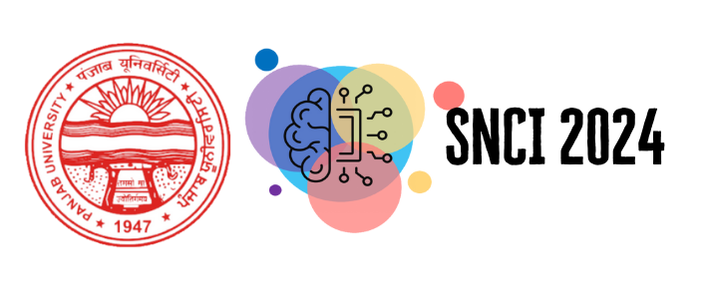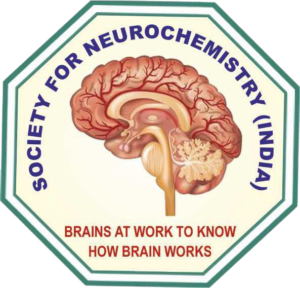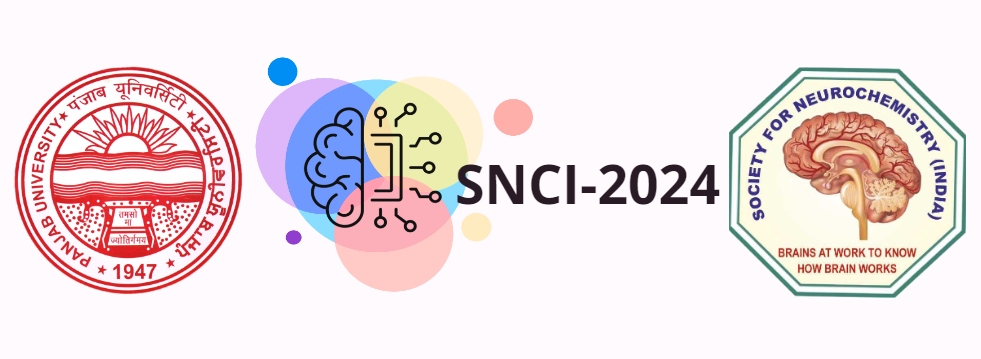Unlock the World of Reddy Anna Your Ultimate Cricket ID Guide
Welcome to the world of Reddy Anna, where passion for the game meets a genuine love for the community. His insights and engaging stories bring a unique perspective to every fan. It’s a pleasure to have you join the conversation.
Understanding the Persona Behind the Name
Understanding the persona behind a name involves delving beyond the simple identifier to uncover the individual’s history, values, and societal impact. This process is crucial for comprehensive brand reputation management and accurate historical or genealogical research. It requires analyzing a person’s actions, affiliations, and public perception to construct a fuller picture.
This deep analysis separates a mere name from the influential legacy or problematic history it may represent.
Ultimately, grasping this distinction is fundamental for anyone engaged in
in-depth biographical research
, ensuring assessments are based on substance rather than superficial recognition.
Origins and Rise to Prominence
Understanding the persona behind the name is a cornerstone of effective marketing strategy. It moves beyond basic demographics to uncover the motivations, pain points, and goals driving your ideal customer’s decisions. This deep customer profile analysis allows for the creation of highly resonant messaging and content that speaks directly to their specific needs, fostering stronger connections and driving conversion.
**Q: How is a persona different from a target audience?**
**A:** A target audience is a broad group (e.g., “young professionals”), while a persona is a detailed, semi-fictional character representing a key segment within that group, complete with a name, background, and specific behavioral drivers.
Key Philosophies and Core Beliefs
Understanding the persona behind the name is a fundamental customer segmentation strategy that transforms generic data into a dynamic human profile. It moves beyond demographics to uncover core motivations, pain points, and behavioral patterns. This deep insight allows for hyper-personalized communication and product development that resonates on an individual level.
A name is just an entry; the persona is the entire story waiting to be engaged.
By truly knowing who you are serving, you can craft messages and solutions that feel uniquely tailored, fostering unparalleled loyalty and driving sustainable business growth.
Defining Moments in His Journey
Understanding the persona behind the name is the key to unlocking authentic connections in a digital world. It moves beyond basic demographics to explore the motivations, pain points, and core aspirations that drive an individual’s actions. This deep customer profiling transforms how brands communicate, ensuring every message resonates on a human level and builds lasting loyalty.
Exploring His Digital Footprint
Exploring his digital footprint reveals a comprehensive narrative of his professional and personal engagements. By analyzing social media activity, forum contributions, and published content, we can map his interests, expertise, and influence. This process is crucial for effective online reputation management and provides invaluable data for strategic personal branding. A thorough audit uncovers both opportunities and vulnerabilities, allowing for a proactive approach to shaping a powerful and authentic online presence that aligns with his long-term goals and public perception.
Content Strategy and Platform Presence
Exploring his digital footprint is a critical process for uncovering a comprehensive online reputation profile. It involves systematically scouring social media, forum contributions, and search engine results to piece together a person’s public narrative. This audit reveals past behavior, professional achievements, and personal connections, forming a powerful digital dossier.
A thorough search can expose a previously hidden history, fundamentally altering perception.
Understanding this online identity is essential for personal branding and risk management in the digital age.
Engaging a Global Audience
Exploring his digital footprint involves a comprehensive analysis of the data trail an individual leaves through online activities. This includes scrutinizing social media profiles, forum posts, published content, and any public records linked to his name. The goal is to understand his online reputation, interests, and professional background. This process is essential for effective online reputation management, providing a clear picture of how one is perceived in the digital sphere.
Building a Community of Followers
Exploring his digital footprint is like being a modern-day detective, piecing together a story from the traces he leaves online. You might start by checking his public social media profiles, old forum comments, or even a professional portfolio. This process of online reputation management is crucial for understanding how someone is perceived by the world. It’s not about snooping, but about seeing the digital identity he has consciously or accidentally built over time.
Analyzing His Impact and Influence
His impact and influence are not merely a list of achievements but a story woven into the very fabric of the industry. One can trace his cultural footprint through the artists who cite him as a primary inspiration and the subtle shifts in creative direction across the field. His work established a new creative paradigm, challenging established norms and opening doors for a generation of innovators. This enduring legacy, a quiet but persistent force, continues to shape conversations and define excellence, proving that true influence is measured not in moments, but in the lasting change it inspires.
Contributions to His Field
Analyzing his impact and influence reveals a legacy that fundamentally reshaped the cultural landscape. His visionary ideas sparked global conversations, challenging established norms and inspiring a new generation of creators. The ripple effects of his work are evident across industries, from technology to the arts, cementing his status as a true pioneer. Enduring cultural legacy is not merely a phrase but the tangible outcome of his relentless innovation. One can scarcely navigate the modern world without encountering the echoes of his contributions. His influence persists, a powerful force continuing to drive progress and shape our collective future.
Inspiring a New Generation
Analyzing his impact and influence requires moving beyond simple metrics to assess the profound and lasting change he instigated. A true legacy is measured by how his core philosophies were adopted by successors and how his actions created a paradigm shift within his field. To understand his enduring relevance, one must trace the lineage of his ideas through subsequent generations. Measuring historical significance involves evaluating both his direct contributions and the long-term cultural or intellectual movements he inspired.
Collaborations and Partnerships
Analyzing his impact and influence reveals the multifaceted ways an individual shapes their field. This process involves a critical examination of their work’s reach, the longevity of their ideas, and their effect on peers and successors. By assessing tangible outcomes, cultural shifts, and intellectual legacy, one can measure their true significance. This comprehensive evaluation is essential for understanding historical and contemporary figures, providing a clearer picture of their contributions beyond immediate popularity. Understanding historical significance requires looking beyond mere fame to enduring effect.
Unpacking His Signature Methodologies
Unpacking his signature methodologies reveals a fascinating blueprint for innovation, built on a foundation of radical curiosity and disciplined iteration. He champions a data-driven approach that systematically deconstructs complex challenges into manageable components. This process isn’t linear but a dynamic cycle of prototyping, testing, and refining, ensuring each solution is both resilient and elegantly simple. The Reddy Anna core of his success lies in this unique fusion of analytical rigor and creative freedom, a powerful combination that consistently yields groundbreaking results and establishes a new industry benchmark for effective problem-solving.
Core Principles for Success
To truly grasp his impact, one must unpack his signature methodologies, a process akin to deciphering a master craftsman’s private workshop. At its core lay a deceptively simple principle: strategic content optimization was never about algorithms, but about human connection. He would spend hours observing his audience, mapping their unspoken desires to the rhythm of their language. This meticulous research informed every creative decision, transforming abstract data into compelling narratives.
He believed the most powerful keyword was a story well told.
This human-centric approach, a stark contrast to sterile technical audits, is what consistently propelled his projects to the top of search engine results pages, creating lasting resonance in a crowded digital landscape.
Step-by-Step Approach to Problem-Solving
Unpacking his signature methodologies reveals a systematic approach to problem-solving rooted in iterative prototyping and user-centric design. The core framework, known as the Synergistic Development Cycle, emphasizes rapid feedback loops and adaptive planning. This process ensures that solutions are not only theoretically sound but also empirically validated through real-world application. This structured innovation strategy allows for continuous refinement and measurable outcomes, significantly enhancing project scalability and long-term viability.
Tools and Resources He Recommends
Unpacking his signature methodologies reveals a framework built on radical simplification and iterative refinement. He champions a process of deconstructing complex challenges into their most fundamental components, thereby eliminating non-essential noise. This approach consistently yields actionable insights and predictable outcomes, establishing a powerful problem-solving framework for modern professionals.
The core tenet is that clarity emerges not from adding more variables, but from systematically removing them.
This disciplined focus on the essential mechanics transforms abstract concepts into tangible, repeatable success.
Addressing Common Questions and Misconceptions
Many learners mistakenly believe that mastering English requires a perfect accent or an enormous vocabulary from day one. This misconception can hinder progress by creating unnecessary pressure. The reality is that effective communication is the primary goal, and fluency develops through consistent practice and embracing mistakes as learning opportunities. Addressing these common questions is crucial for building a solid foundation. A key strategy is focusing on practical language acquisition through immersion and real-world use, rather than rote memorization. By understanding these principles, students can adopt more effective study habits and build genuine confidence in their English communication skills, paving the way for long-term success.
Debunking Prevalent Myths
Addressing common questions and misconceptions is crucial for English language mastery. Many learners believe fluency requires perfect grammar, yet effective communication often prioritizes clarity over rigid rules. Another frequent misunderstanding involves vocabulary, where depth of understanding a few key terms proves more valuable than a superficial knowledge of thousands. Effective language learning strategies debunk these myths by focusing on practical usage, consistent practice, and contextual understanding, which builds genuine proficiency far more effectively than rote memorization alone.
Clarifying His Stance on Key Issues
Many learners worry about making mistakes or not having a “language gene,” but these are common hurdles, not stop signs. The truth is, fluency isn’t about perfection; it’s about effective communication. You can absolutely master English grammar by practicing in real conversations, not just memorizing rules. Embracing this learning process is key to achieving English language proficiency. Remember, every expert was once a beginner who kept going.
Separating Fact from Fiction
Addressing common questions and misconceptions is crucial for English language mastery. Many learners wonder about the difference between “affect” and “effect” or struggle with the correct usage of articles. A persistent English grammar guide clarifies that prepositions often depend on context, not rigid rules, and that achieving a “native accent” is not a prerequisite for effective communication. Understanding these nuances builds confidence and fluency, moving learners beyond textbook knowledge to practical application.
**Q&A**
* **Q:** Is it wrong to end a sentence with a preposition?
* **A:** No, this is a common myth. While sometimes avoided in formal writing, ending a sentence with a preposition (e.g., “What are you talking about?”) is generally acceptable in modern English.
Looking Towards the Future
Looking towards the future demands a proactive and strategic mindset, focused on harnessing emerging technologies and fostering sustainable innovation. The key to long-term success lies in achieving **meaningful digital transformation** that integrates artificial intelligence and data analytics into core operations. By prioritizing **agile methodologies** and continuous learning, organizations can build resilience and adapt to an ever-changing global landscape. This forward-thinking approach is not merely an option but a fundamental requirement for thriving in the next decade and securing a competitive advantage in an interconnected world.
Q: Why is a future-focused strategy important for businesses today?
A: It allows companies to anticipate market shifts, leverage new technologies, and build sustainable models for long-term growth and relevance.
Upcoming Projects and Initiatives
Looking towards the future demands a proactive mindset focused on future-proofing your career. To thrive, you must embrace continuous learning and cultivate adaptability. Prioritize developing skills in high-growth fields like artificial intelligence and data analytics, while also strengthening uniquely human capabilities such as critical thinking and emotional intelligence. This deliberate approach ensures you remain agile and valuable, ready to seize emerging opportunities and navigate the evolving professional landscape with confidence.
Long-Term Vision and Goals
Looking towards the future demands a proactive embrace of future-proof business strategies. We are moving beyond reactive adaptation into an era of active creation, where leveraging artificial intelligence, sustainable innovation, and decentralized systems will define success. This forward-thinking approach is not merely an option but a critical imperative for building resilient organizations and a thriving global community. The next decade will belong to those who anticipate trends and architect the world they wish to see.
The Evolving Legacy
Looking towards the future requires a proactive mindset focused on strategic innovation. We are not merely observing trends but actively shaping them, leveraging emerging technologies to build resilient systems and unlock new opportunities. This forward-thinking approach is essential for sustainable growth, ensuring we can navigate upcoming challenges and thrive in an ever-evolving landscape.



